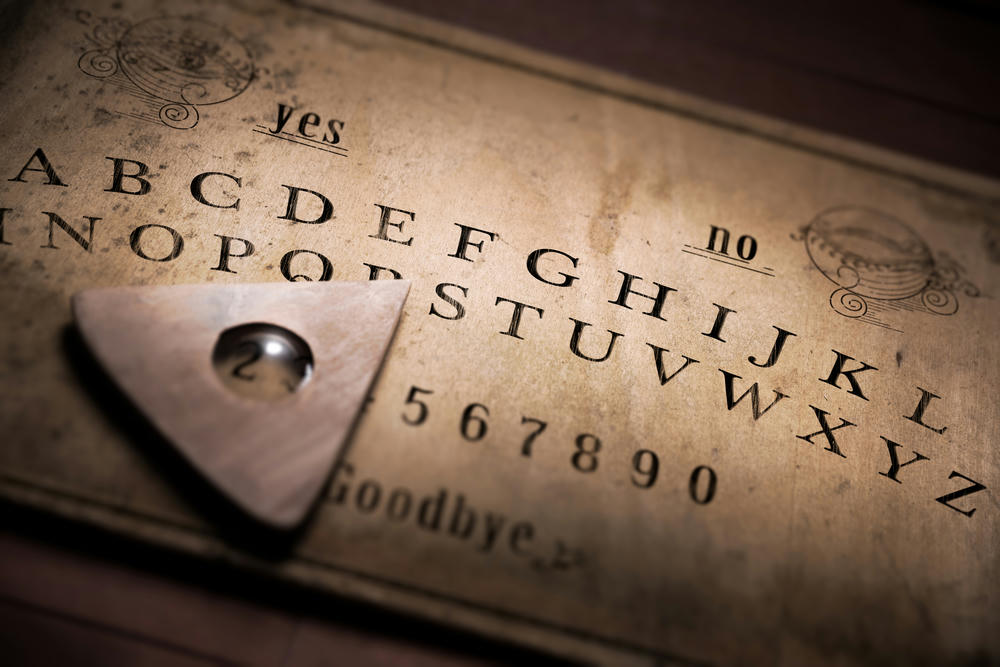
2026 Astrological Blueprint | What will be your happiness quota this year?
Rainbow
12/2/2025, 12:00 PM
Unveiling the ethereal bridge between the living and the dead, this blog delves into the fascinating art of psychic mediums. Join us on a journey of understanding, as we unravel what a mediumship reading is and its significance in our lives.
A mediumship reading is a session with a psychic medium who can communicate with spirits in the afterlife. The medium conveys messages and guidance from the departed to living loved ones seeking closure, comfort, or insight into the beyond.
In this type of psychic reading, the medium channels and interprets messages using symbols, impressions, or direct communication from the spirit world. This profound exchange facilitates a connection with the unseen, essentially serving as a bridge between two realms.

To comprehend what a mediumship reading is, it's crucial to grasp the role of a medium. A medium is someone attuned to energies beyond the physical world, acting as a link between the living and the deceased.
It’s important to understand various mediums exist, each with its unique approach and specialisation in conducting mediumship readings. Some of the most common types of mediums include:

It’s important to note that some mediums may specialise in one specific type of mediumship, while others may incorporate multiple abilities into their practice.
The terms and definitions can vary too, and some mediums may use different labels to describe their specific abilities.
Mediums use various tools to enhance or facilitate their connection with the spirit world during mediumship readings.
However, it’s important to understand that not all mediums use tools, and some rely solely on their intuitive abilities.
Here are some common tools that mediums might use:

These tools are widely recognised and utilised in different cultures and spiritual practices around the world.
Keep in mind that the effectiveness of these tools often depends on the beliefs and practices of the individual medium.
During a mediumship reading, you'll establish a connection with spirits or energies from the other side. The session typically starts with an introduction, where the medium explains the process and creates a positive, open-minded atmosphere. The medium then tunes into the energy around them to facilitate spirit communication.
As the reading progresses, the medium shares messages, insights, and information from the spirit world. This may include details about the personality, memories, or specific events related to the departed loved one.
Validation is often offered to confirm the authenticity of the connection. The medium may provide specific details known only to you or your departed loved one, serving as confirmation. For instance, they might describe a unique item as validation for the spirits' presence.
The session encourages open communication, allowing you to ask questions or seek guidance from the spirits. You can inquire about specific concerns or seek reassurance, and the medium will convey the responses they receive.
As the session concludes, the medium will disconnect and provide an overview of the reading. This summary helps wrap up the experience and ensures clarity on the information shared during the session.
When exploring mediumship readings, the distinction between mediums and psychics can sometimes be unclear. Here's a breakdown of their main differences:
Mediums specialise in connecting with spirits or entities from the afterlife. During a reading, a medium serves as a bridge between the living and the dead, conveying messages from the spirit world.

Psychics have a broader focus encompassing various intuitive abilities. Their skills extend to providing information about the past, present, or future. Psychics may use tools like Tarot cards to offer guidance on different aspects of life, not limited to connecting with spirits.
Ultimately, the key difference between the two is the primary focus: spirits for mediums and a more extensive range of intuitive insights for psychics.
Remember, while mediums may incorporate psychic abilities, not all psychics possess the powers for mediumship.
If you're new to mediumship services and scratching the surface of what a mediumship reading is, it's crucial to become aware of the possible red flags associated with fraudulent practitioners.
Here are common warning signs to be aware of.

Now that we've covered the red flags, here are positive signs to help you find authentic and legitimate mediums.
The positive signs:
By recognising these positive signs, you can enhance your chances of finding a genuine medium that aligns with your needs and expectations, giving you the mediumship reading you deserve.
Now you know what a mediumship reading is, why not try one out? Get in touch with our talented mediums today.
Learn more about your love life, career and future and try another free horoscope on PsychicWorld.
All free horoscopes All year horoscopes Today's horoscope
Chat with an online psychic expert and make 2023 your year!
*Image(s) used under license from Shutterstock.com and / or stock.adobe.com

Rainbow
12/2/2025, 12:00 PM

SJ Ayra
12/1/2025, 11:00 AM

SJ Ayra
12/1/2024, 10:00 AM
Chat with one of our qualified psychics and find your path to happiness
Jane, Santa Monica
"I have never had a better, more accurate, more specific and honest and helpful reading in my life. I tried free psychic chat and my psychic read my situation right away, so I continued with a live psychic chat session"
Amber, New Jersey
"The psychics I talked to are incredibly kind and offer great insight. They helped me to see things clearly and offer great guidance on what I should be focusing on with my personal growth journey."
Lisa, Hicksville, New York
"I never expected to get some much from my first reading. Keith helped me find the way to my spiritual path and gave me specific action steps to ensure I continue the good work we began during our session."